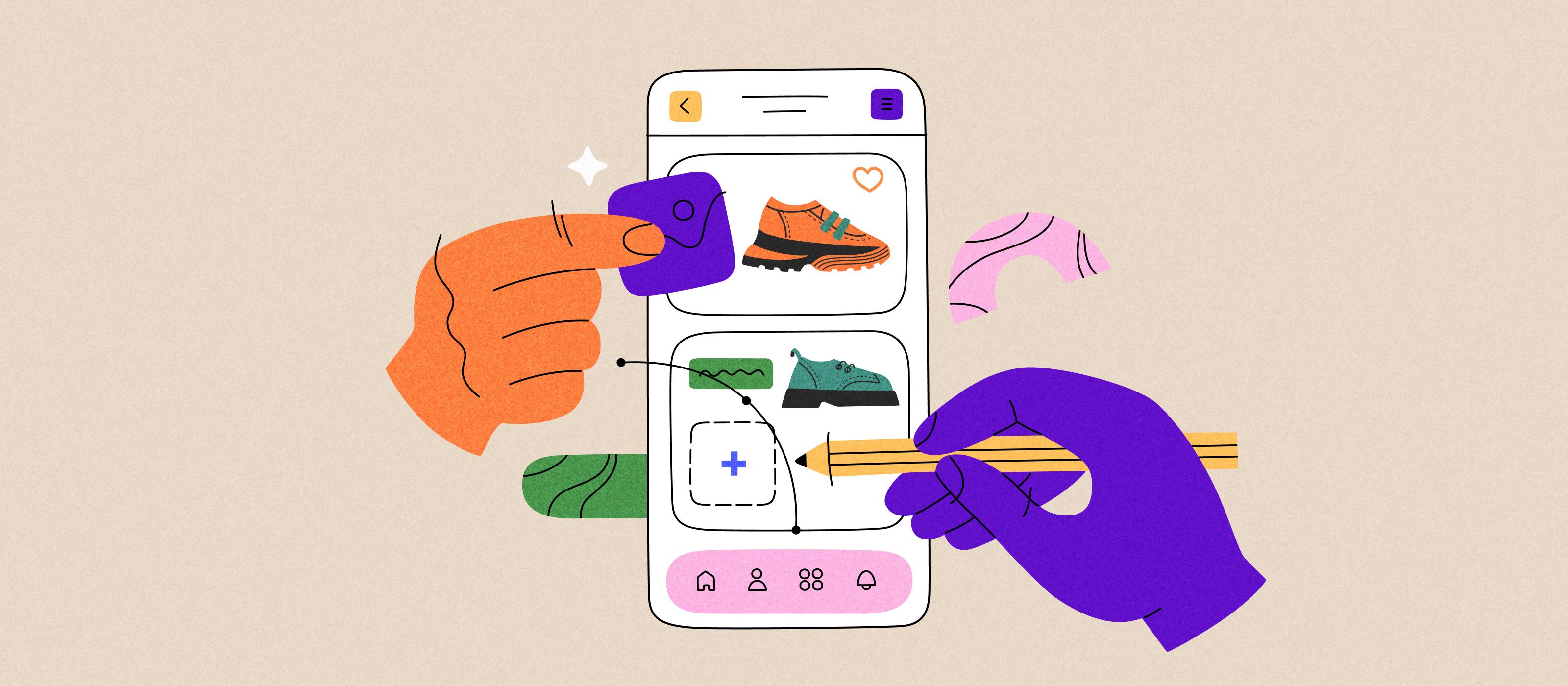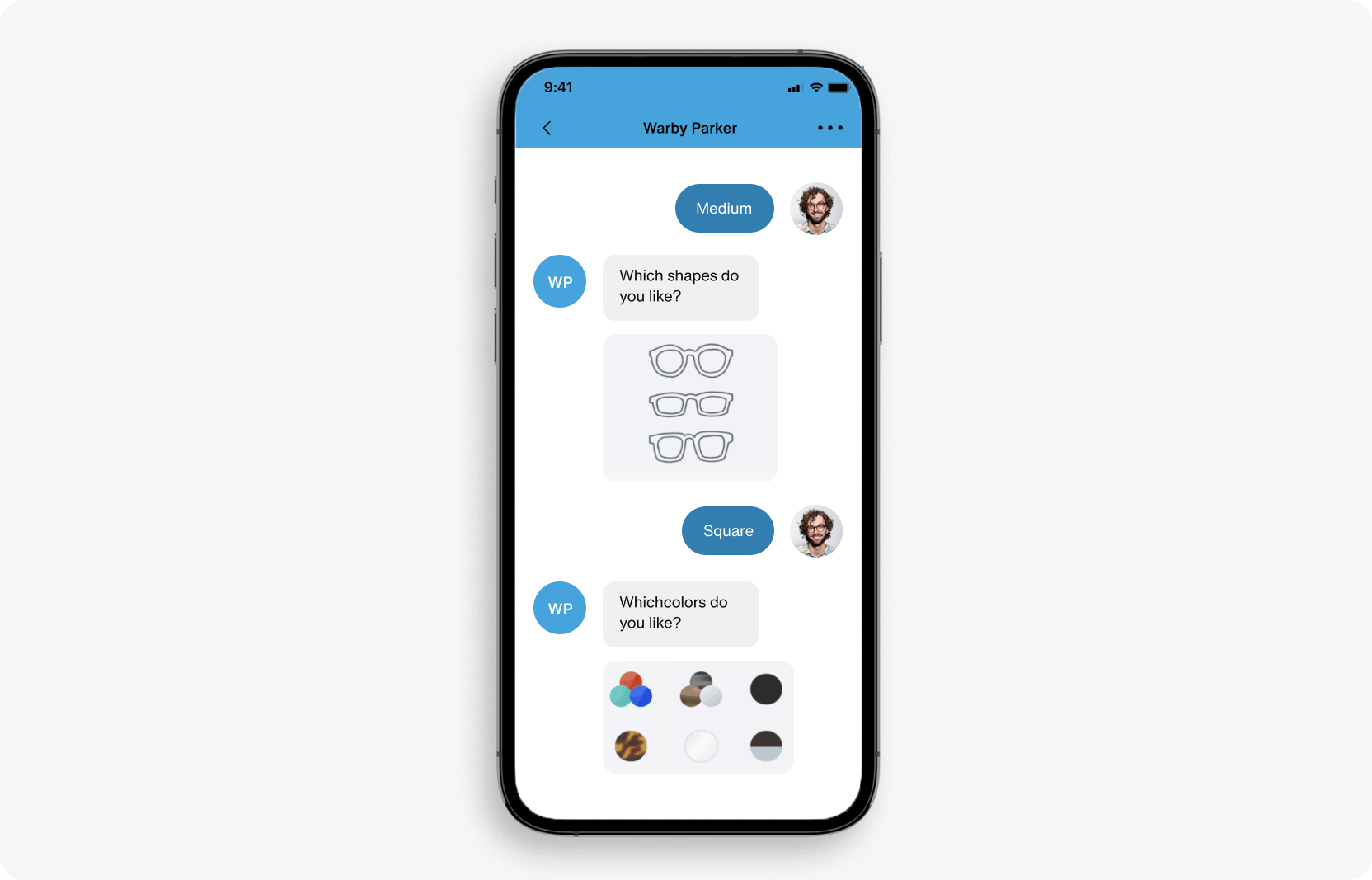How to maintain brand consistency in your retail app

Your brand consists of everything you’re presenting to people to help distinguish yourself from the competition.
Your website, logo, advertisements, and the voice and personality used in your external communications are all extensions of your brand.
But those elements are merely intended to influence how people view and think about your business. How a brand truly comes to life is how your customers, investors, media, and others view and interact with you.
The power of a brand in retail apps and beyond

In this guide, we’ll look at how a brand is developed and how you can ensure its consistency throughout your retail app and other touchpoints. Because if you’re wondering how to create a retail app with solid branding, it’s essential to learn these lessons and apply them to your chat communications and retail text message marketing.
Building blocks for your branding
As with any proper meal, multiple ingredients must go into a brand. Here are some of the critical elements to consider while yours is in the development phase:
Personality: While this element focuses on how your brand feels, it’s directly tied to how you present yourself. If you want to position your business as an expert in the industry, your personality might be sophisticated and showcase your unique insights. If you were fostering a brand of inclusion, you could highlight the stories of your people and use vibrant colors that highlight your supportive culture.
Logo: If you could fit your organization into a nutshell, what would it look like? Logos serve as your brand’s initial representation for many customers. Humans like to make snap judgments, so your logo must deliver the right impression.
Imagery: How will your brand be visually presented? Going back to the earlier examples, an “expert” brand might use graphics and icons with an academic vibe. On the other hand, the “inclusive” brand could use dynamic photographs of their people and illustrations that have a friendly vibe.
Colors: You can choose anything from bold colors to earthy hues. All that matters is that they complement each other and reinforce the brand you’re building.
Putting your brand into action
When your brand is distinct, you’ll stand out from the competition. When your brand feels authentic, you’ll make more emotional connections. And when your brand is consistent, you’ll build more trust.
It’s the consistency that can be tricky for many businesses. For example, they might have an exceptional website, but their social media team neglects the elements that make the site so distinct. Modern organizations have so many teams working on different channels that it’s easy for issues to arise.
Here are some examples of the messages that your business might be using:
In-app messaging: These communications are the backbone of many customer exchanges and often relate to support, sales, and relationship building.
Completing transactions within messages: The immediacy of messages allows you to move customers forward and close the deal.
Notifications: You can keep customers updated and engaged with promotions, content, account reminders, etc.
Email: This channel is often used for transaction-related messages like cart reminders and purchase receipts.
SMS: Texting can be a less effective channel because of its informal nature and the fact that many customers consider it to be spammy.
With in-app retail messaging and other channels, it’s essential to focus on consistency due to the many different individuals who might be participating in these communications. When gaps exist in a brand, similar gaps can emerge in the customer experience. Inevitably, trust in your brand will suffer.
Let’s look at nine strategies to help prevent this by incorporating branding in chats:
1. Follow your brand guidelines
Just as a mechanic needs the right tools to accomplish their job, you’ll need a set of guidelines that help your various communication channels stay consistent and compelling. Collaborate with your creatives and other stakeholders to develop these guidelines for your written and visual materials.
Make sure your approved fonts are identified for your chats and other written communications. You’ll also want to create grammar guidelines that ensure clarity of message and a unified vibe.
2. Stay true to your voice
Of course, your brand is more than just a set of guidelines. Your unique voice is where the brand transcends the mountains of generic phrasings in the world, causing customers to see a distinct and beneficial brand.
Consider how to put your personality into words. For example, if your business provides services within the tech industry, you might use infuse communications with language that reflects your familiarity with even the most complex topics faced within the industry. On the other hand, an institution of higher learning could use a friendlier and more casual voice that sounds like one student helping another student.
Also known as “tone,” your voice is an essential brand element that all communicators must understand and embrace within your various teams. Your voice won’t always appeal to everybody, but you’d never want it to do that. You’re aiming for your customer persona.
3. Focus on your customer persona
Targeting your communications to your core followers requires knowing and understanding your audience. What are their motivations? What are their biggest challenges? What will make them most likely to feel confident in your business?
If you don’t know your customer persona, block out some time over the next month to start researching. You can’t thrive in today’s market without knowing who you’re talking to and how to get them to engage meaningfully.
Once you’ve identified your customer persona, you can use that valuable data as your guide for communications that go well beyond retail text message marketing and chatting in an app for retail. For example, it will help you improve everything from the calls to action in your emails to the headlines you use on social media posts.
4. Ensure that it’s timely and helpful
When it comes to knowing how to create a retail app with effective communications, you need to assess the critical purpose of the app. It will most likely come down to making your customers’ lives easier. You can translate this goal into your brand communications by being prompt in your messages and always striving to provide help where needed.
You’d be surprised by how many businesses drag out their chat responses. If customers feel like they’re being treated more like a burden than a treasure, then happily jump ship and go to one of your competitors.
5. Only use brand-approved emojis and images
Emojis and images should already have been laid out as part of your brand guidelines, but they sometimes get treated like items of lesser importance. Nothing could be further from the truth. These visual elements can communicate your brand faster than words and leave a lasting impression.
Ensure everyone understands your guidelines and is confident using them in chat exchanges. Some brands might avoid emojis altogether, as they can bring too much whimsy or youthfulness. Others lean into them, choosing emojis that perfectly capture the brand's personality.
6. Make it feel human
There are so many bots used in today’s market that customers are on alert anytime they get emotionless, robotic messages. If you use a chatbot for frontline communications, that’s fine. But when a human representative communicates with customers, it needs to feel like a more personable and impactful conversation.
For example, if a customer begins chatting with your customer service team to report an issue with their recent product delivery, it’s essential to start with empathy. Validating their concerns shows that you heard what they said, rather than responding with something generic like: “We understand that you had problems with your delivery.”
7. Make it feel original
Customers often get cheated out of a human response within retail app communications when the responses are all copied and pasted. It’s easy to see the attractiveness of this approach, as it reduces the need for training and shortens the time needed for most customer interactions.
But when you’re limited to copy-and-pasted responses, the conversation takes on a formulaic tone that makes customers feel like you don’t consider them worthy of your time. You can avoid this unfortunate result by teaching your teams to customize their chat responses. Pasting the prepared text into the chat box is not a problem. Still, these responses need to be tweaked when possible, reflecting your brand and showing a more substantial level of personalization.
8. Reference your other marketing assets
Brands are always strongest when your various channels support each other symbiotically. So if you have a high-performing blog post relevant to a customer chat, feel free to share the link. If you create an FAQ that addresses concerns and is a shining example of your brand, ensure your teams have the link and include it in relevant chats.
The point is to look for maximum mileage from your most vital brand assets. Adopting a multi-channel approach to your communications will enable you to engage customers and present a more cohesive view of your brand.
9. Make sure your commitment to customer service shines through
Above all, the chats within your retail apps should make customers feel valued. Making customer service an unmissable priority within your brand’ll make communications stronger and more memorable.
The secret to creating lifelong brand evangelists is validating their concerns, providing solutions, and occasionally delightful moments. Do this, and your brand will come to life in ways you never thought possible.
The importance of keeping your brand vibrant
You should feel proud if you’ve developed a brand that reflects your unique personality and resonates with customers. But don’t you dare rest on those laurels. When brands become stagnant, they begin to lose all the energy and goodwill that’s been developing.
So how do you keep things fresh? By continually asking the big questions that helped you develop your brand in the first place. Your business is evolving, and you and your team members have also grown. Draw from this progress to find the inspiration necessary for brand evolution.
Here are five key questions to ask:
Where do we want to go in the next six months?
What are currently the strongest aspects of our brand?
How can we push them even further?
What are the weakest aspects of our brand?
How can we make them truer to our values?
Remember that you’re never alone when it comes to brand evolution. Enlist diverse members of your team to share their insights and recommendations. You should also pay attention to your social posts, blog articles, and display ads to see what’s getting the most robust responses from your audience. Collaborative brands are always the strongest brands.
Delivering the best brand interactions
With all the thought and effort you’re putting into keeping your brand vibrant and relevant, you owe it to yourself to use the right tools to help deliver it to your customers. After all, the customer experience defines your brand and paves the way for your success.
Sendbird helps team members manage multiple conversations effortlessly, freeing them up to personalize the messaging and build connections. Most importantly for your brand, our platform lets you customize the messaging interface and use the fonts, colors, and icons essential to your identity.
Try Sendbird for free today to experience the more accessible side of branding. Because with the right tools for your retail apps, you’ll always be at your best.










